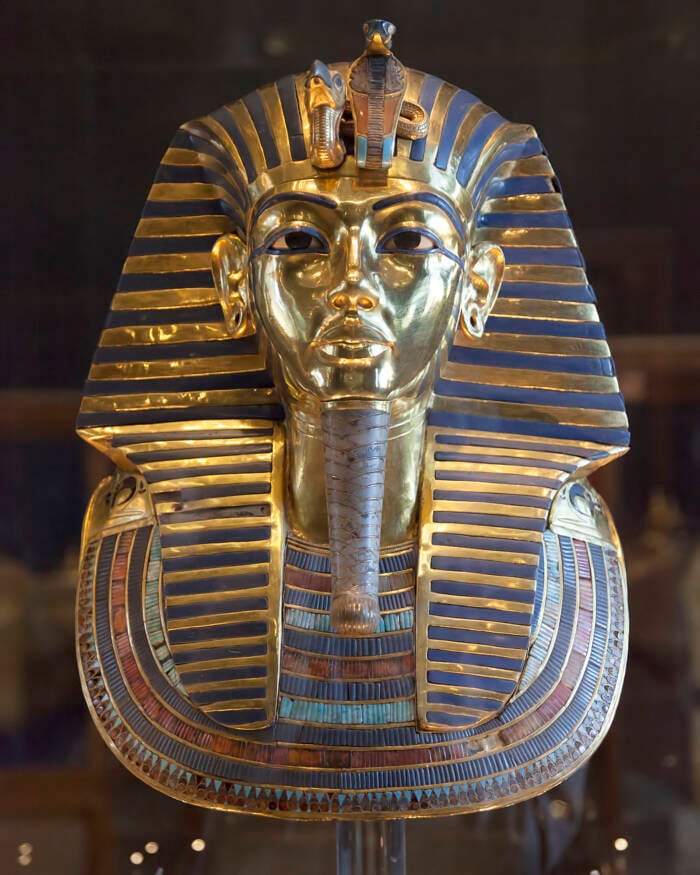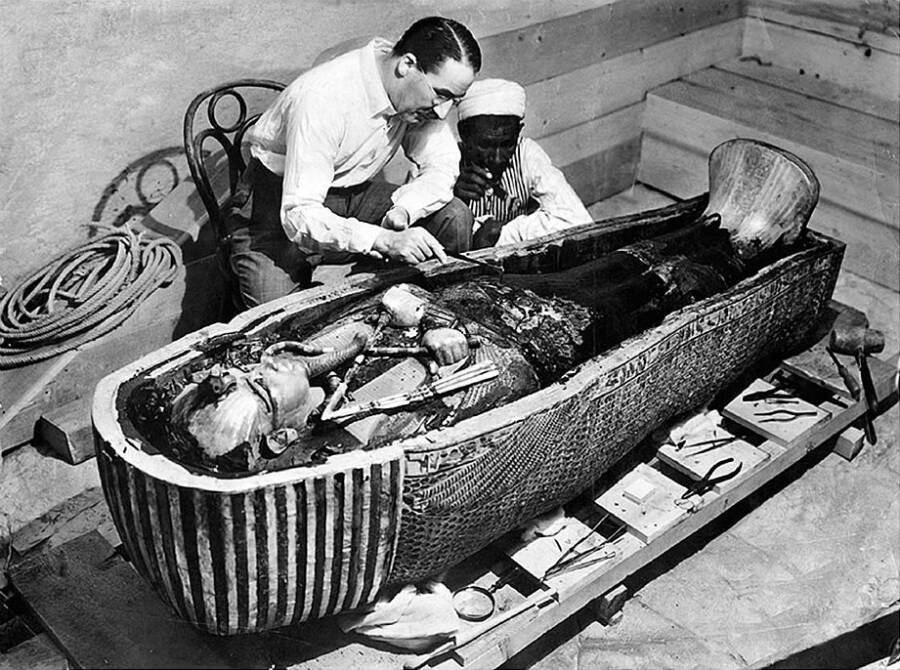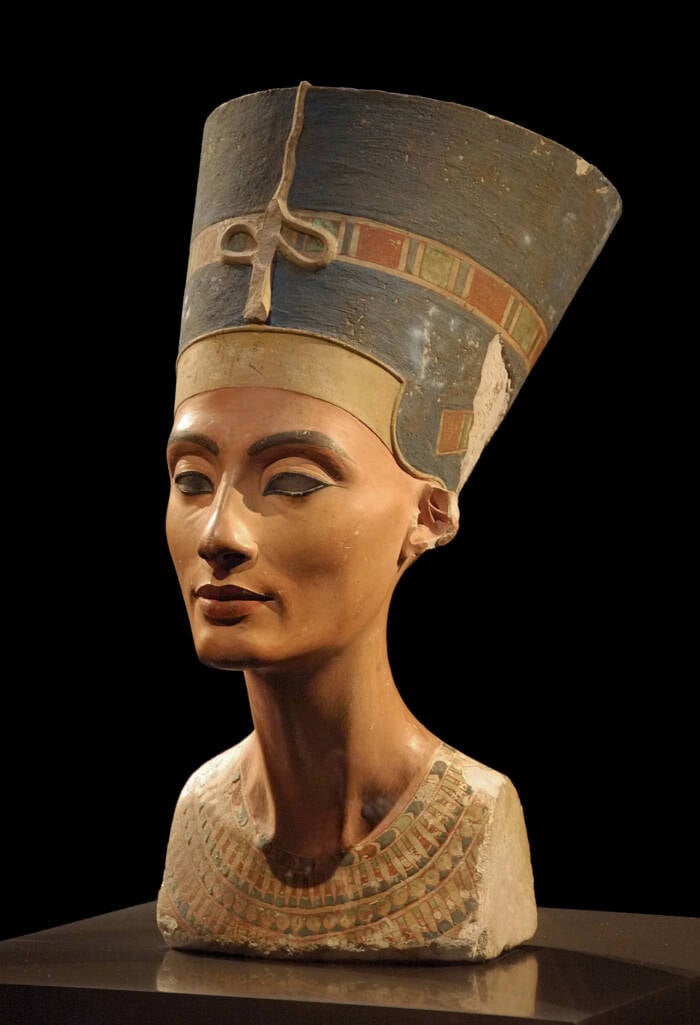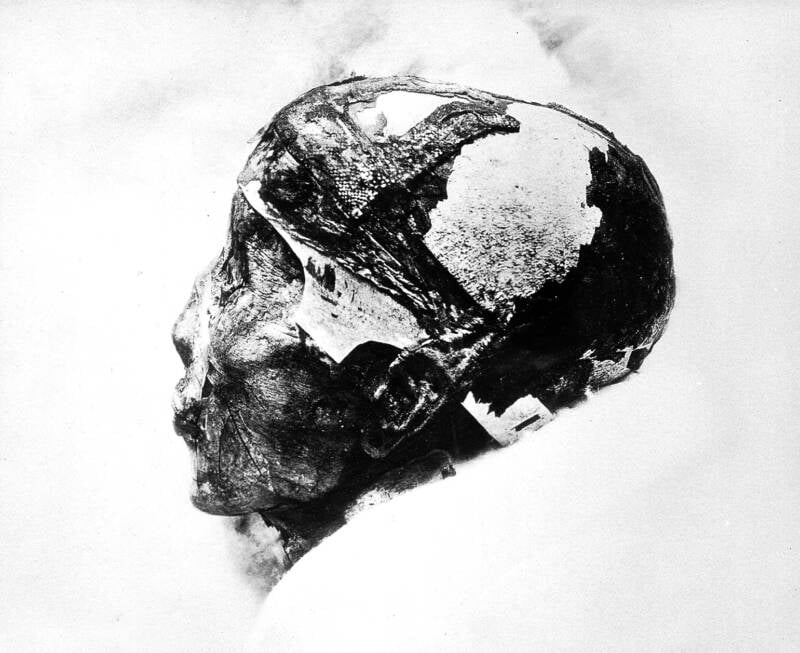Uncharacteristic earring holes on King Tut's burial mask prompted a re-examination, leading historians to find evidence that the legendary pharaoh's face had likely been grafted onto another ruler's funerary mask.

Wikimedia CommonsResearchers discovered that King Tut’s funeral mask features earring holes — an unusual detail for an adult male in ancient Egypt.
The famous golden death mask of the Egyptian boy king Tutankhamun likely wasn’t made for him, according to a new study.
A re-examination of King Tutankhamun’s mask by researchers from the University of York pointed out a few unusual elements that could suggest the mask had originally been made for a high-status woman or a child. And the basis for this theory comes down to one rather small detail: earring holes.
Earring Holes On King Tut’s Death Mask Suggest It Could Have Been Made For Someone Else
Since the discovery of King Tutankhamun’s tomb in 1922 by archaeologist Howard Carter, the boy king has remained perhaps the most well-known figure in the history of ancient Egypt. Researchers have continuously conducted examinations of King Tut’s tomb, mummy, and mask, but a new study caught one overlooked detail — holes in the mask’s ears.
Earring holes would have been unusual for an adult male ruler in ancient Egypt, and this strange detail prompted further investigation from university researchers.

Wikimedia CommonsArchaeologist Howard Carter working on King Tut’s tomb soon after its discovery.
As lead researcher Professor Joann Fletcher, an expert in Egyptian history, told Express, “This mask was not made for an adult male pharaoh when the gold was compared, [they found] the face is made of completely different gold to the rest.”
Essentially, the mask, which was meant to depict the face of Tutankhamun, used a different gold than the rest of the sarcophagus. Fletcher said the mask shows clear “evidence of soldering,” as if Tutankhamun’s face had been “grafted onto the mask of the previous ruler.”
“They may have had pierced ears, they may have been a woman,” Fletcher said, “it may well have been Nefertiti.”
Was King Tut’s Burial Mask Originally Intended For Queen Nefertiti?

Wikimedia CommonsThe iconic bust of Queen Nefertiti, stepmother of King Tut.
This theory has been proposed before. As the Greek Reporter notes, British Egyptologist Nicholas Reeves proposed in 2015 that King Tut’s mask had likely been intended for Nefertiti, due to the mask’s “feminine appearance” and similarity to Nefertiti’s iconic bust.
It’s possible, Reeves argued, that Nefertiti’s mask had been reused due to the urgency surrounding King Tut’s burial. Given that the young pharaoh ascended to the throne at just nine years old and died unexpectedly only a decade later, there was little time to prepare a unique burial mask of Tut’s face. Historians have acknowledged before that the Egyptian court may have been forced to rely on readily available items for King Tutankhamun’s funeral — including someone else’s burial mask.

Wikimedia CommonsThe mummified head of King Tut.
Queen Nefertiti and King Tutankhamun are two of ancient Egypt’s most iconic figures. Nefertiti, renowned for her beauty, was the chief wife of Pharaoh Akhenaten during the 14th century B.C.E. She played a significant role in the religious revolution that shifted Egypt’s worship to the sun deity Aten. Her fate after Akhenaten’s death remains a mystery, with some theories suggesting she may have ruled as Pharaoh Neferneferuaten.
Tutankhamun ascended the throne around 1332 B.C.E. at about nine years old. His reign was brief, ending with his untimely death around 1323 B.C.E. Despite his short rule, the discovery of his nearly intact tomb in 1922 by Howard Carter brought him worldwide posthumous fame.
Carter, at the time, noted the earring holes on the mask but did not follow through on a closer investigation of this detail. Now, Fletcher and the research team have focused on this long “overlooked” detail — and revealed new mysteries about the enigmatic boy king.
After learning about this new research into King Tut’s mask, explore the story of the curse that allegedly befell those who discovered Tut’s tomb. Then, read about the tragic life of Ankhesenamun, King Tut’s wife and half-sister.





